A Deep Dive into Drupal 10.3: What You Need to Know
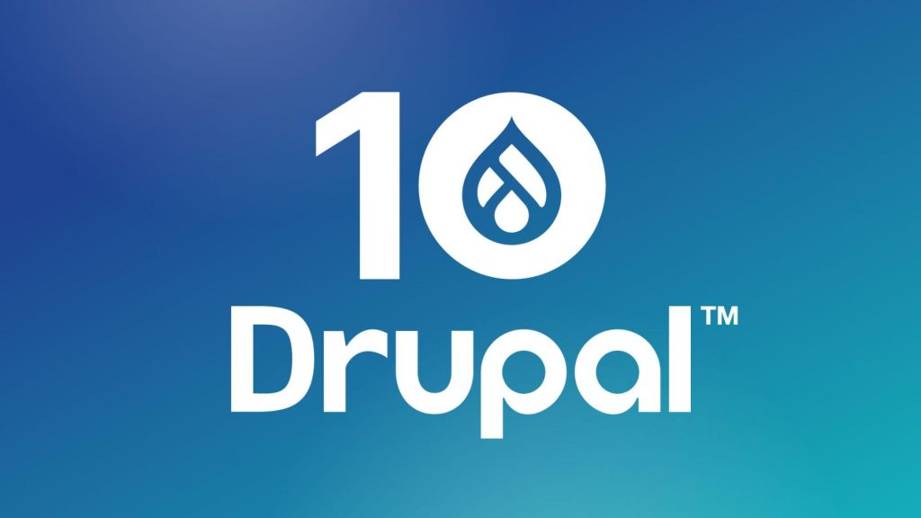
Drupal has long been a leader in innovation and flexibility among content management systems. With the release of Drupal 10.3, the platform takes a significant leap forward. This update, the final feature release of Drupal 10, introduces new features and improvements that enhance both user experience and developer capabilities. Let’s explore what makes this release so significant for the Drupal community.
1. New Experimental Navigation Module
One of the most exciting additions in Drupal 10.3 is the experimental Navigation module, which introduces a ground-up redesign of the classic toolbar.
Key features:
- Left-aligned, collapsible vertical sidebar.
- Full-height drawer for sub-menus, accommodating deeper navigation levels.
- Responsive design: top-positioned toolbar on smaller viewports with an overlay.
- Customizable branding (e.g., replacing the default Drupal logo).
- Integration with Layout Builder for easy modification.
- New content creation and management menu for quick access to content-related tasks
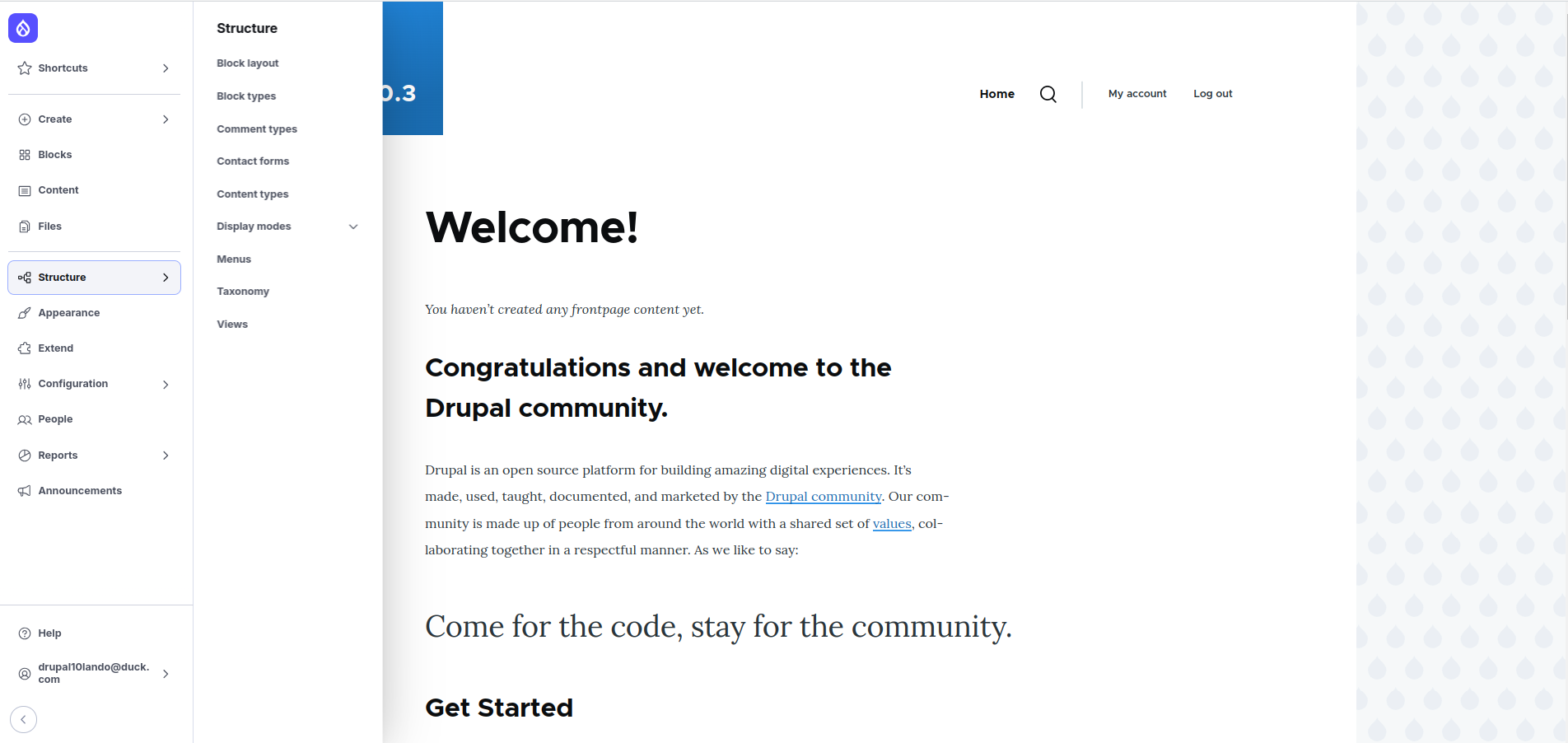
The new navigation system aims to enhance menu efficiency, save space, and improve overall user experience.
2. Stable Workspaces Module
The Workspaces module in Drupal 10.3 has transitioned from its previous experimental status to a stable feature, providing significant benefits for site owners. Key features and use cases include:
- Multiple Work Environments:
- Allows the creation of multiple work environments within a single Drupal site.
- Enables staging of various content changes to be published all at once.
- Safe Testing:
- Facilitates safe testing of content and configurations before live deployment.
- Ensures that changes can be reviewed and approved in a controlled environment.
- Simultaneous Publishing:
- Ideal for scenarios requiring simultaneous publication of multiple content updates.
- Useful for complex deployments such as product launches or time-sensitive updates.
- Content Management:
- Enables preparation of multiple pages for events, product launches, or other significant updates.
- Allows the creation of different content versions for sporting events, elections, and other scenarios with variable outcomes.
- Organizational Use:
- Essential for large organizations that need to coordinate content updates across different departments.
- Ensures that all relevant content goes live at the same time, maintaining consistency and accuracy.
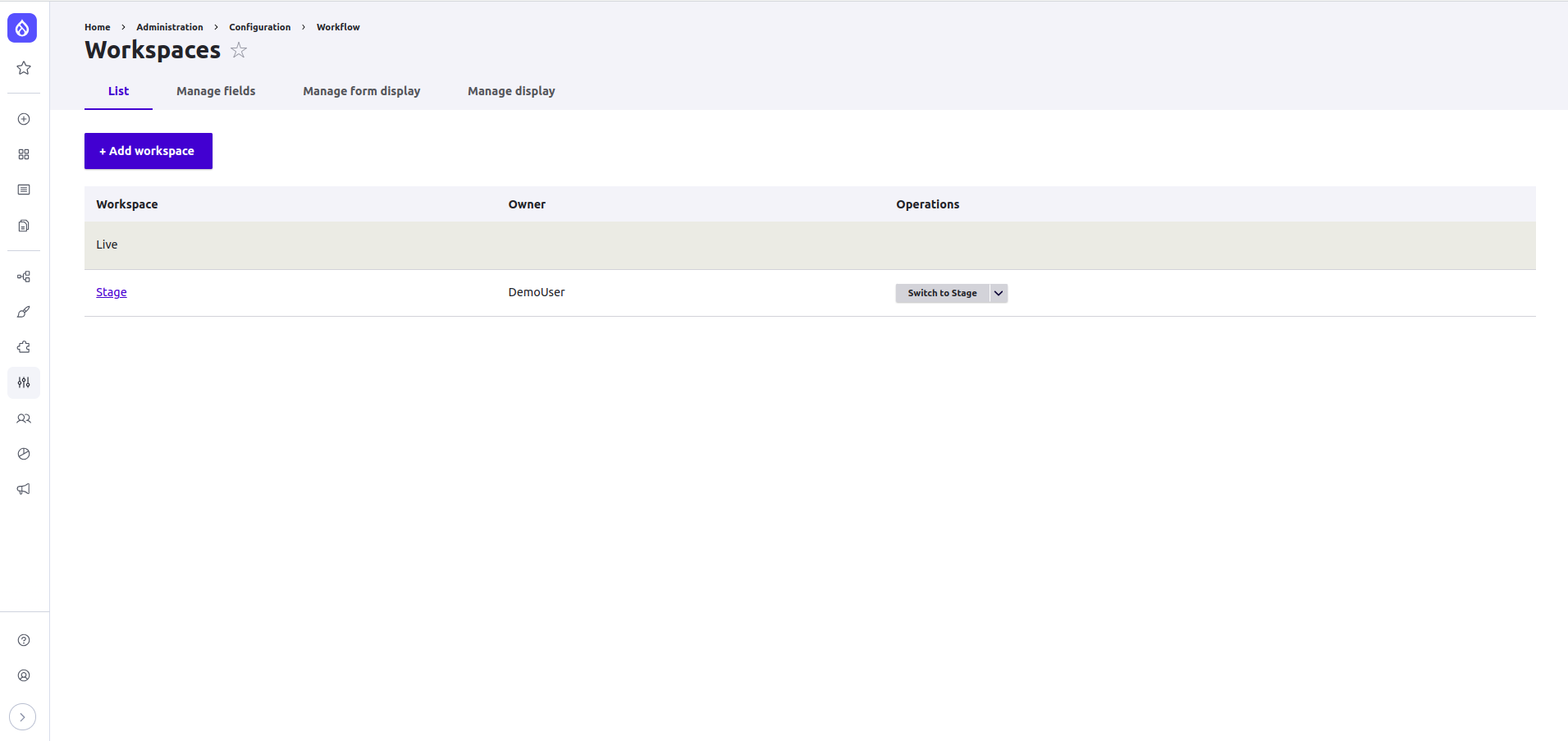
The Workspaces module enhances Drupal’s content management, offering a robust solution for efficient staging and deploying content updates.
3. Single Directory Components (SDC)

Single-Directory Components (SDC) support, introduced as an experimental feature in Drupal 10.1, is now a stable part of the base system in Drupal 10.3. This enhancement significantly improves the developer experience with the following benefits:
- Unified Component Directory:
- Groups all UI component files, including Twig, YAML, CSS, and JavaScript, into a single directory.
- Facilitates better organization and management of UI components.
- Simplified Component Management:
- Enhances the reusability of components across the site.
- Streamlines the process of updating and maintaining components.
- Improved Developer Workflow:
- Promotes a more efficient workflow by keeping all related files together.
- Reduces the complexity of navigating through different directories to find component files.
- No Separate Module Required:
- Eliminates the need to enable a separate module to use SDC.
- Integrates seamlessly into the base system, making it easier to adopt and use.
SDC has been very well-received by the Drupal community, and its integration into the core system makes it a valuable tool for efficient UI development. For more details, refer to the official documentation of the Single Directory Component.
4. Improved Content Organization
Drupal 10.3 introduces several enhancements that make content management more intuitive and efficient:
- Streamlined Menu Item Editing: The interface for editing menu items has been refined, making it easier to manage navigation elements. Advanced options are now conveniently displayed in a sidebar, allowing users to focus on the most important elements without distraction.
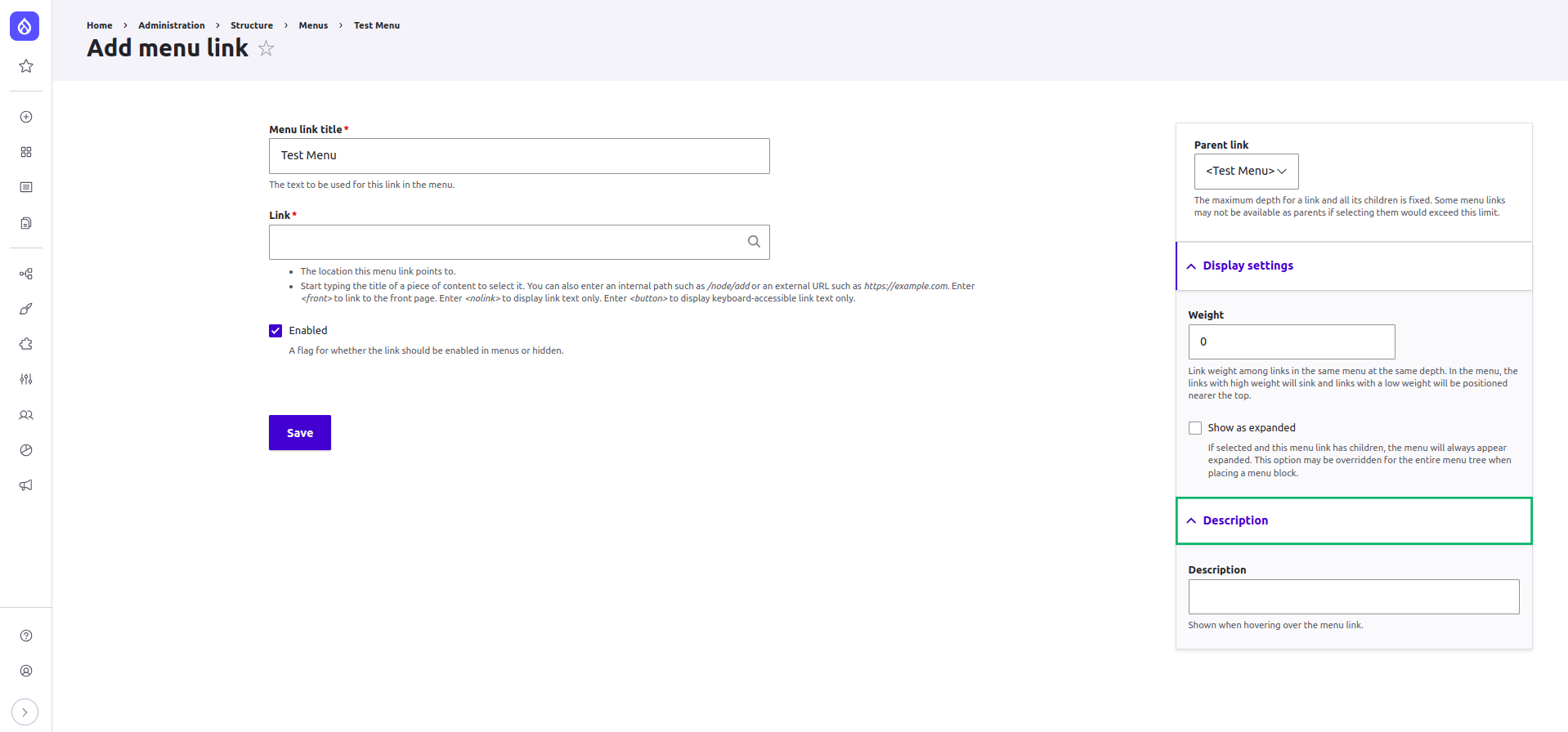
- Dedicated UI for Taxonomy Term Revisions: A new user interface for editing taxonomy term revisions has been added, simplifying the process of managing term changes
.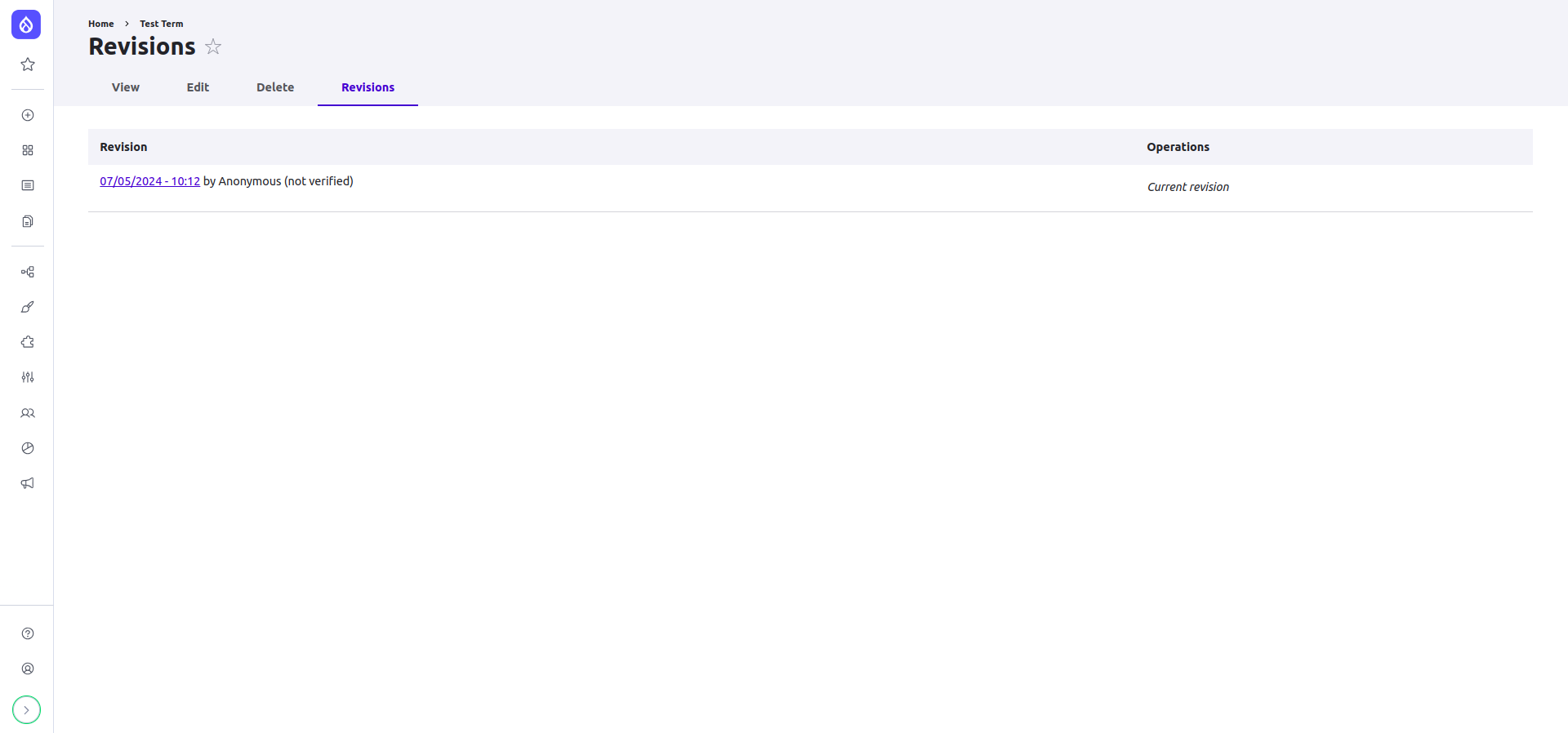
- Content Moderation for Taxonomy Terms: Drupal 10.3 now supports content moderation for taxonomy terms, enabling better control over term updates and approvals.
These improvements collectively make Drupal 10.3 a more user-friendly and powerful tool for content management.
5. New Recipes and Default Content APIs
 The introduction of Drupal recipes in Drupal 10.3 brings unprecedented flexibility and power to site building. As the foundation for the Drupal Starshot Initiative, recipes aim to make Drupal easier to use out of the box for all users. After years of development, Recipes have been added to Drupal Core in 10.3 as Experimental APIs.
The introduction of Drupal recipes in Drupal 10.3 brings unprecedented flexibility and power to site building. As the foundation for the Drupal Starshot Initiative, recipes aim to make Drupal easier to use out of the box for all users. After years of development, Recipes have been added to Drupal Core in 10.3 as Experimental APIs.
- Automated Module Installation and Configuration: Simplify your setup process by automating the installation and configuration of Drupal modules.
- Easy Composition and Sharing: Create and share your site-building recipes with ease, streamlining the development process.
- Multiple Recipes on a Single Site: Unlike install profiles, you can apply multiple recipes to a single site, offering greater versatility.
- No Lock-In: Apply recipes without making permanent changes to your site, allowing for flexibility and easy adjustments.
- New APIs for Enhanced Functionality: Leverage new APIs for Configuration Actions, Configuration Checkpoints, and Default Content to enhance your site’s capabilities.
Comparison with Install Profiles
| Feature | Install Profiles/Distributions | Recipes |
| Lock-in | Not possible to uninstall (until Drupal 10.3) | No lock-in |
| Inheritance | Cannot extend other profiles or distributions | Can be based on other recipes |
| Composability | Cannot install multiple profiles or distributions | Multiple recipes can be applied and combined |
6. Access Policy API
Drupal 10.3 introduces the powerful Access Policy API, revolutionizing how access control is managed:
- Advanced Access Control: Extend access control beyond traditional permissions and roles, offering more nuanced and flexible security options.
- Context-Based Access: Implement context-based access controls such as two-factor authentication and rate limiting to enhance site security dynamically.
- Unified Access System: Streamline access management by converting existing permission and role-based systems to the new API for consistency and efficiency.
- Extensibility: Empower custom or contributed projects to integrate additional access policies, providing greater adaptability to meet diverse security needs.
With these capabilities, the Access Policy API in Drupal 10.3 offers a robust framework for managing access, making your Drupal sites more secure and adaptable.
7. Other Notable Improvements in Drupal 10.3
Drupal 10.3 brings a host of impressive enhancements that further streamline content management and improve the user experience:
- CKEditor 5 Enhancements:
- Autoformatting for quick content formatting.
- Improved copy-paste from Word and Google Docs.
- Optional premium features like real-time collaborative editing.
- Decoupled Navigation Management:
- New Linkset standard endpoints for JavaScript frontends.
- Non-developers can manage menus without coding.
- Flexible Block and Content Management Updates:
- Create custom blocks in the Structure section.
- Show or hide blocks based on response status (e.g., success, access denied, not found).
- Granular permissions for block revisions.
- Sanitize and transliterate filenames during uploads.
- Support for media entity revision editing.
- Enhanced Page Loading:
- BigPipe improvements for faster loads.
- Interface previews for delayed content.
- Lazy loading for images and embed content.
- WebP Optimization:
- Default image styles now use WebP, reducing image sizes by 25–34%.
Drupal 10.3 is a powerful, user-friendly platform with enhanced performance, security, and flexibility for developers and content managers.
9. The Future of Drupal 10 and Beyond
- Drupal 10.3 is the final feature release of the Drupal 10 series
- Drupal 11 is scheduled for release in late July 2024
- Drupal 10 enters long-term support until mid-to-late 2026
- Future minor releases will focus on security and smoother upgrades to Drupal 11
To learn more about upgrading from Drupal 7 to Drupal 10.3, visit this blog post. If you’re upgrading from Drupal 9 to 10.3, check out this comprehensive guide.
Conclusion
Drupal 10.3 marks a significant evolution with improved user experiences, enhanced developer tools, and greater flexibility in site building and content management. Key features like the new Navigation module, stable Workspaces, and Recipes API demonstrate Drupal’s commitment to user-friendly interfaces and robust development capabilities. As Drupal progresses towards version 11, these enhancements lay a strong foundation for the platform’s future, ensuring it remains a top choice for web development. Stay tuned for more exciting developments that will empower developers and enrich user experiences.

